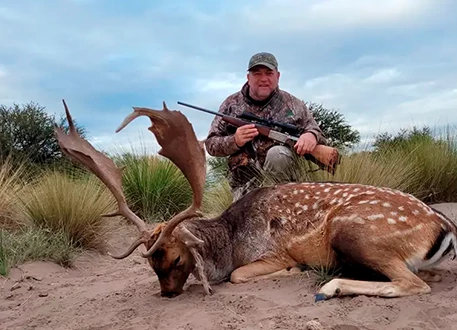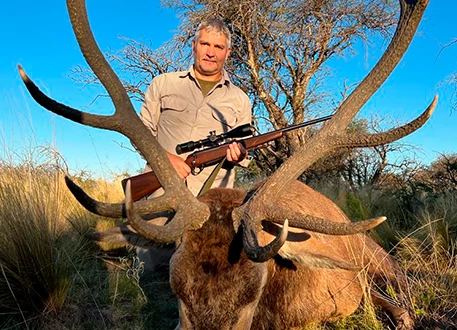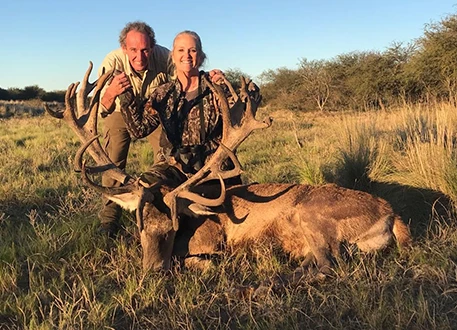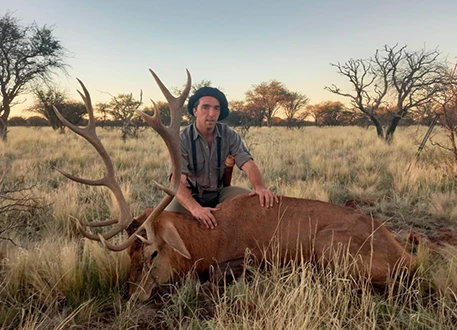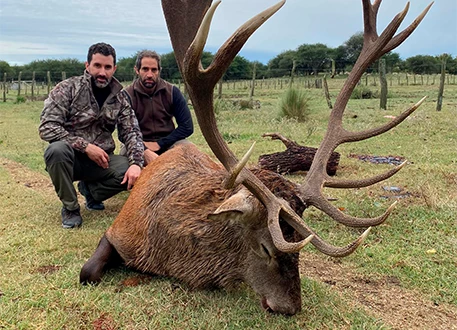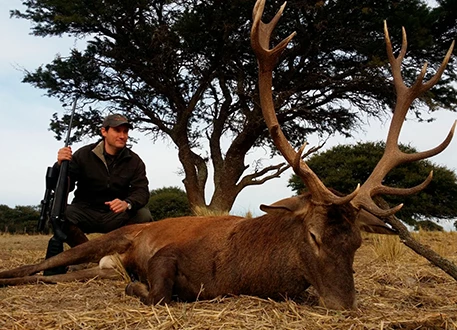EXPLORE BY SPECIES
Check below all the details of where you can find each species.
Axis Deer
– Hight: 30- 40-inch
– Weight: 150-250 lbs
– Length: 5 ft.
– Life span average: 9-13 y
The Axis deer is a species native to India (, also called Chital) can be easily identified, by the white carry three points per antler spots that bespeckle its coat. Only adult males, with (six total). It has been introduced in many places around the world, considered invasive species in many of them. Since is a fierce competitor for local resources. They adapt to various terrains from sparse forests to grasslands but love the scrubland. Doesn’t like the cold temperatures and thrives on tropical humid-hot weather.
Mostly active at dusk or dawn, they roam in herds through the year.
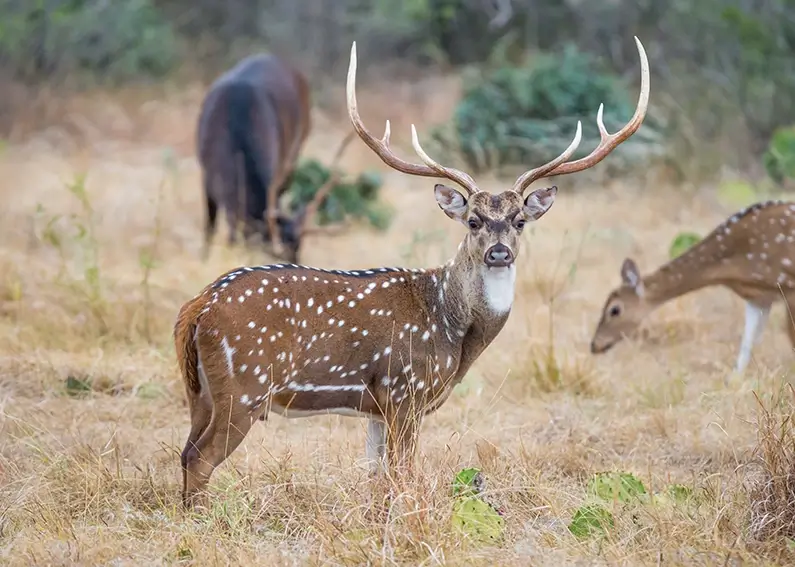
Where Can You Find It?
BLACKBUCK ANTELOPE
– Hight: 29-33-inch.
– Weight: 50-125 lbs.
– Length: 4,1 ft.
– Life span average: 10-15 y
The Blackbuck Antelope is a species native to India and Pakistan can be easily identified, by the spiraled horns (only males). Mature males are black dorsally with white eye rings, chest and inner legs. Females, youngsters, adult males (later in the season) are tan in coloration.
They preferred open areas and grasslands, they may use brush or wooded land to find refuge from temperature and winds, since their thin skin and short fur coat, offers little resistance to it. They roan in herds throughout the year.
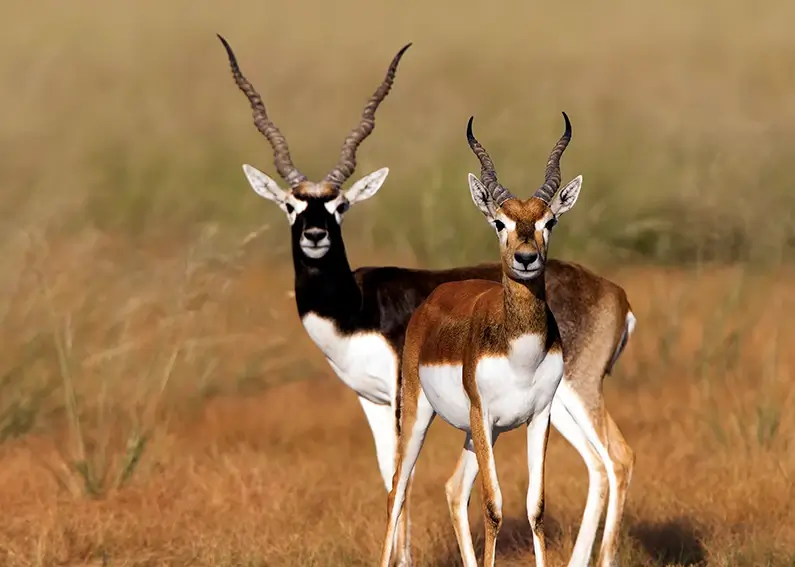
Where Can You Find It?
EUROPEAN MOUFLON
– Hight: 30- 35-inch.
– Weight: 80-125 lbs.
– Length: 4 ft.
– Life span average: 10-13 y
The European mouflon has a smooth hairy coat, the rams are fox red-brown in the summer, usually with a whitish saddle patch, the ewes are brownish. Both sexes are darker in winter.
The rams have helix-shaped horns up to 80 cm long; the females may or may not have horns, depends on the genes and the blood line of the area. (smaller horns that are slightly curved towards the rear) The eyesight of the mouflon is well developed.
Its laterally-located eyes allow him to scan a wide arc, without turning its head.
In older rams, the field of view may be restricted by the position of the horn tip. As a result, rams begin to wear down these horns.
Their binocular vision is limited to a relatively small facial arc of 60 percent; only in this area can they see any depth of field; in the rest of their visual arc, mouflon can mainly just perceive movement.
This species adapted extremely well to the Patagonian region and also are commonly found hybrids, of this species.
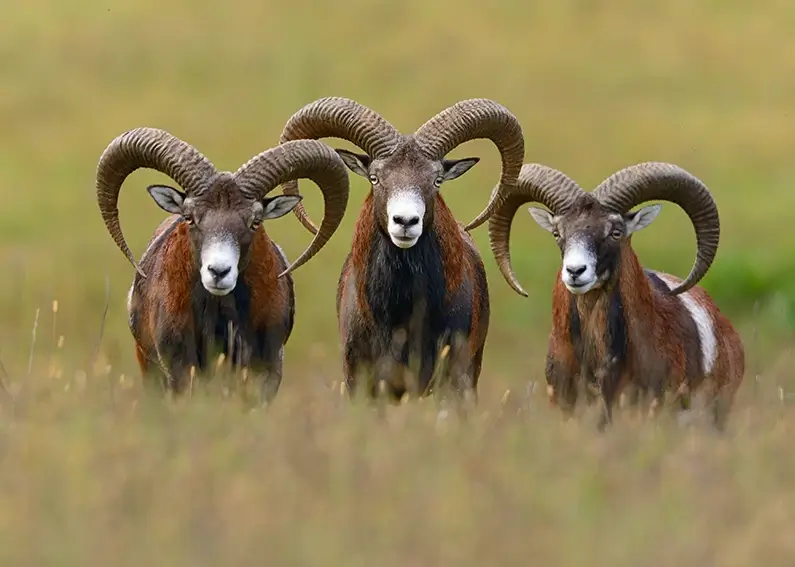
Their binocular vision is limited to a relatively small facial arc of 60 percent; only in this area can they see any depth of field; in the rest of their visual arc, mouflon can mainly just perceive movement. This species adapted extremely well to the Patagonian region and also are commonly found hybrids, of this species.
Where Can You Find It?
FALLOW DEER
– Hight: 33-37-inch.
– Weight: 130 -220 lbs.
– Length: 5 ft.
– Life span average: 12-16 y
Probably one of the most interesting species in the Cervidae family. Very sough after trophy, due to de possibility of a slam.
Much variation, occurs in the coat colour of the species, with four main variants.
COMMON: chestnut coat with white mottles, it is more pronounce in summer with a much darker, unspotted coat in the winter.
Menil: Spots are more distinct than common in summer and no black is seen around the rump patch or on the tail. In winter, spots are still clear on a darker brown coat.
Melanistic (black): All year the coat is black, shading to greyish-brown. No light-coloured tail patch or spots are seen.Leucistic (white, but not albino): Fawns are cream-coloured; adults become pure white, especially in winter. Dark eyes and nose are seen. The coat has no spots.
Most herds consist of the common coat variation, yet animals of the menil coat variation are not rare. The melanistic coat variation is generally rarer, and the white coat variation is very much rarer.
Only bucks have antlers, which are broad and shovel-shaped (palmate) from three years. In the first two years the antler is a single spike. They are grazing animals; their preferred habitat is mixed woodland and open grassland. During the rut bucks spread out and females move between them; at that time of year fallow deer are relatively ungrouped compared with the rest of the year.
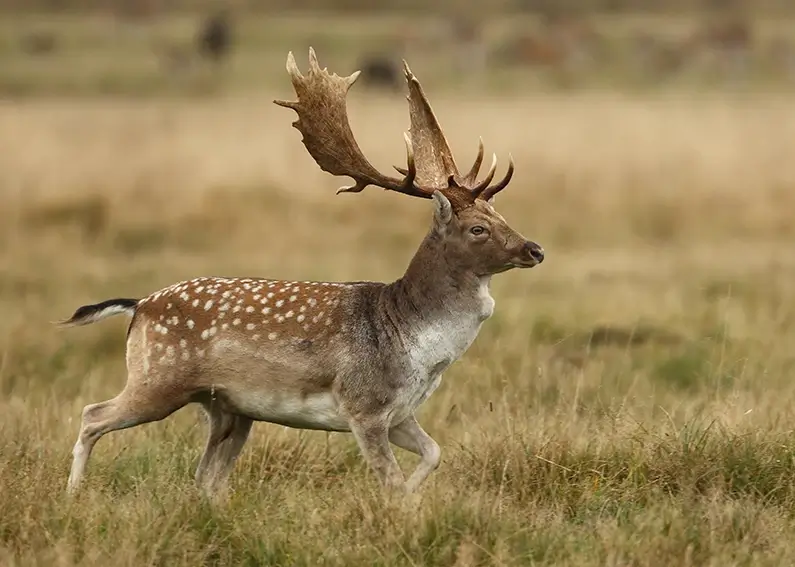
Most herds consist of the common coat variation, yet animals of the menil coat variation are not rare. The melanistic coat variation is generally rarer, and the white coat variation is very much rarer.
Only bucks have antlers, which are broad and shovel-shaped (palmate) from three years. In the first two years the antler is a single spike. They are grazing animals; their preferred habitat is mixed woodland and open grassland. During the rut bucks spread out and females move between them; at that time of year fallow deer are relatively ungrouped compared with the rest of the year.
Where Can You Find It?
RED STAG DEER
– Hight: 45-55 Inch.
– Weight: 350-550 lbs+
– Length: 7 ft.
– Life span average: 10-14y
The red deer is the fourth-largest extant deer species, behind the Moose, Elk and Sambar deer. The deer of central and western Europe vary greatly in size, with some of the largest deer found in the in Central Carpathian Mountains of Europe. Western European red deer, historically, grew to large size given ample food supply (including people’s crops), and descendants of introduced populations living in New Zealand and Argentina have grown quite large in both body and antler size. Large red deer stags may rival North American elk in size.
Female red deer are much smaller than their male counterparts.
Red deer tend to be reddish-brown in their summer coats, and some individuals may have a few spots on the backs of their summer coats.
During the autumn, all red deer subspecies grow thicker coats of hair, which helps to insulate them during the winter. Autumn is also when some of the stags grow their neck manes. The autumn/winter coats of most subspecies are most distinct.
The Caspian red deer’s winter coat is greyer and has a larger and more distinguished light rump-patch (like wapiti and some central Asian red deer) compared to the Western European red deer, which has more of a greyish-brown coat with a darker yellowish rump patch in the winter.
By the time summer begins, the heavy winter coat has been shed; the animals are known to rub against trees and other objects to help remove hair from their bodies.
Red deer have different coloration based on the seasons and types of habitats, with grey or lighter coloration prevalent in the winter and more reddish and darker coat coloration in the summer.
They live in small and large herds, with some of the adult males single out or can be seen as a small group of bachelors: to re-join the herd at the ROAR to compete with other males for the right to breed.
Only the stags have antlers, which start growing in the spring and are shed each year, usually at the end of winter. Antler size varies due to genetics and nutrition. They grow and form a crown at the end, although the Free range stags in Argentina as well in many other places, the adult males don’t acquire this format and possess one, close to their cousins the Elk or Maral.
NOTE: Remember that in Argentina, the Antler grow is in the opposite seasons than Europe.
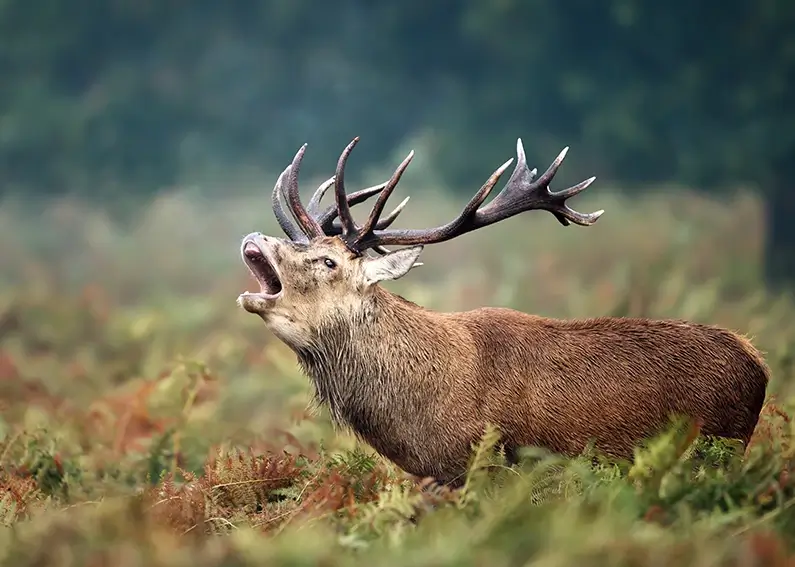
Red deer have different coloration based on the seasons and types of habitats, with grey or lighter coloration prevalent in the winter and more reddish and darker coat coloration in the summer.
They live in small and large herds, with some of the adult males single out or can be seen as a small group of bachelors: to re-join the herd at the ROAR to compete with other males for the right to breed.
Only the stags have antlers, which start growing in the spring and are shed each year, usually at the end of winter. Antler size varies due to genetics and nutrition. They grow and form a crown at the end, although the Free range stags in Argentina as well in many other places, the adult males don’t acquire this format and possess one, close to their cousins the Elk or Maral.
NOTE: Remember that in Argentina, the Antler grow is in the opposite seasons than Europe.
Where Can You Find It?
WATER BUFFALO
– Hight: 50-60-inch.
– Weight: 1200 -2100 lbs.
– Length: 7,5-9,5 ft.
– Life span average: 20-25 y
This specie was introduced in Argentina, more than 140 years ago. The main purpose was meat and dairy production, the reasons of the creation of diverse wild herds vary, from escapees to unsustainable business and let go. Today you can find three species, Jafarabadi originated in India with a horns that drops following the skull and curl at the tips.
The Murrah also from India, but his horns are a tight curl to the side of the skull. The Italian or the Mediterranean,that has a wider and thicker horns. Many of this species cross-breed, producing some very unique shapes.
Towards the north east of Argentina, you may find larger amounts of the Indian breeds that do much better on the tropical climate. Further south, you have more of the Mediterranean since they do better on dry and colder temperatures.
As their cousin , the cape buffalo. They live in large and small herds, the old bulls get displaced by the younger breeders. Even they look docile, they are extremely dangerous. Not as aggressive…. but much harder to take down!
These buffalos are much larger than the cape and thicker skin, there for, most of the times, requires multiple shots. Other particularity, is that they become very aggressive if they smell blood, caution when pursuing other species is a must , if they are present or in the vicinity.
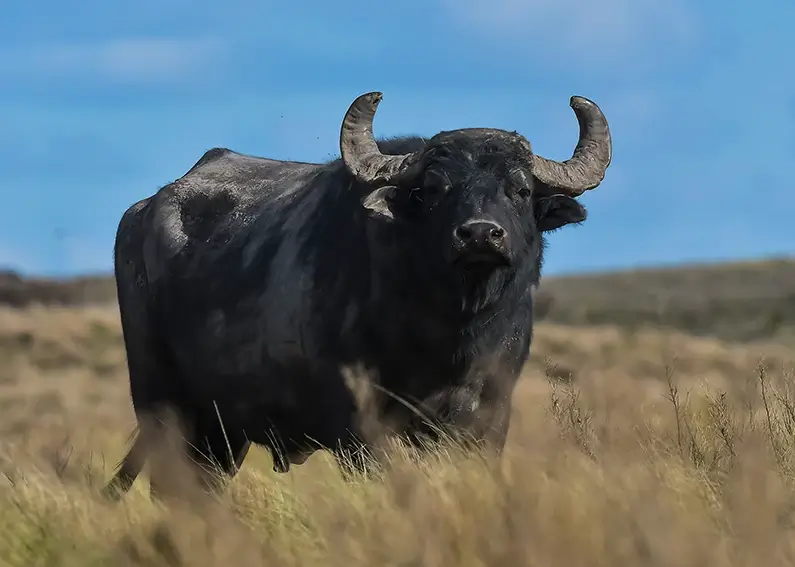
As their cousin , the cape buffalo. They live in large and small herds, the old bulls get displaced by the younger breeders. Even they look docile, they are extremely dangerous. Not as aggressive…. but much harder to take down!
These buffalos are much larger than the cape and thicker skin, there for, most of the times, requires multiple shots. Other particularity, is that they become very aggressive if they smell blood, caution when pursuing other species is a must , if they are present or in the vicinity.
Where Can You Find It?
WILD BOAR
– Hight: 35-40-inch.
– Weight: 200-300 lbs+
– Length: 5 ft.
– Life span average: 10- 14y
The wild boar, also known as the wild swine, common wild pig, native to much o Eurasia and North Africa, and has been introduced to the Americas and Oceania.
The species is now one of the widest-ranging mammals in the world, as well as the most widespread. Their population, It has been assessed as least concern, due to its wide range, high numbers, and adaptability to a diversity of habitats. It has become an invasive species in part of its introduced range. There has been recognize 16 sub species, which they live in matriarchal societies consisting of interrelated females and their young (both male and female).
Fully grown males are usually solitary outside the breeding season. The wild boar has a long history of association with humans, having been the ancestor of most domestic breeds, and for millennia.
Boars have also become one of the most sought-after game animals. They are usually active from dusk till dawn, but in low hunting pressure areas, become active during daylight.
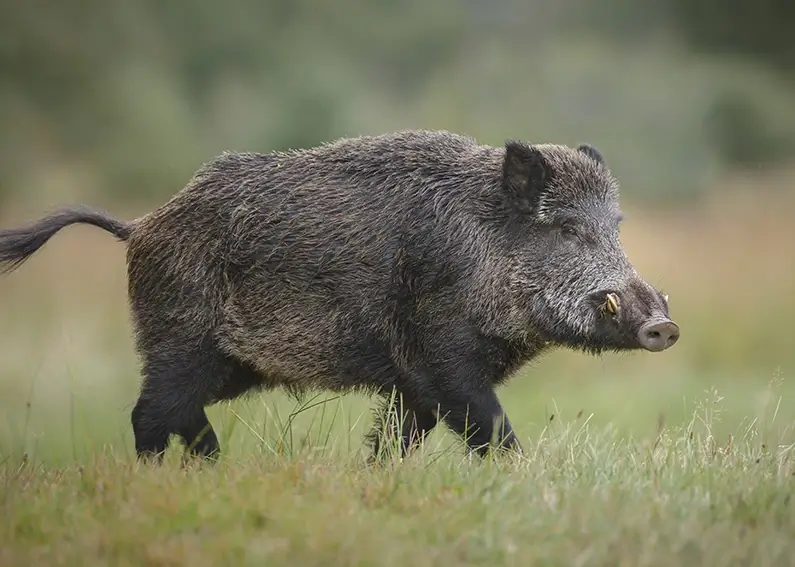
Boars have also become one of the most sought-after game animals. They are usually active from dusk till dawn, but in low hunting pressure areas, become active during daylight.

